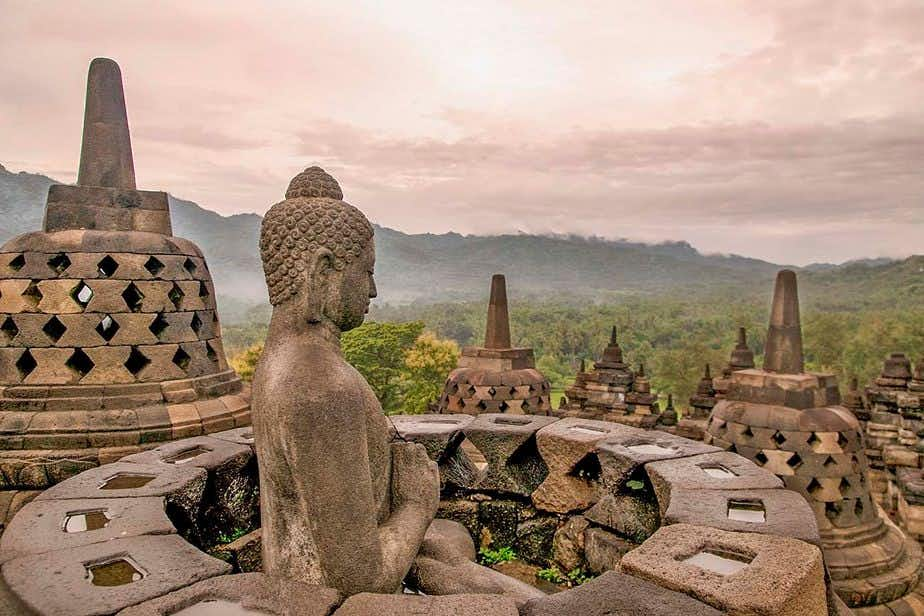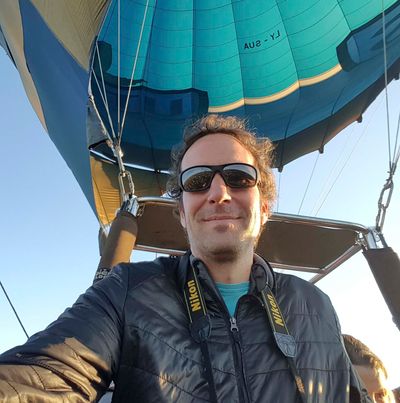Login
No account yet?
Create Account
Borobudur
Largest Buddhist temple in the world
6 travellers have this on their Bucket List
0 been here
Borobudur is the largest Buddhist temple in the world. It's located close to Merapi, the most active volcano in Indonesia.
The temples was long hidden in the rainforest. Dutch rediscovered the temple in 1815 and started the excavations, but also the trashing of it.
Most tourists nowadays visit Borobudur to experience the magical sunrise. But you have a lot more options to choose from as I noticed when I visited Borobudur. These tips will show.
If you visit the Borobudur you have to prepare well. So you can avoid most other tourists. There are several other excursions that can make your visit more enjoyable.
Sunrise at Borobudur
The hills around Borobudur, and its lush, green setting make a wonderful décor. Watching the sun announce a brand-new day is kind of a must here. It’s a perfect occasion to take in the remarkable building and its history, and it’ll be relatively quiet at this time of day.
Do keep in mind you need to pay extra to see the sunrise. You can always arrive just after sunrise and watch the sun climb up over the temple.
Also nice: The sunset at Borobudur
Of course, you can also choose to watch the sun set instead, when it colours the sky bright red. Though don’t expect the enjoy the view just by yourself.
Sleep with a view of Borobudur
See Borobudur from a mountain top
The place to be if you want to see Borobudur from afar is Menorer Hill. The surrounding hills make a great backdrop for the idyllic setting of the temple between several volcanoes.
The best time to ascent the hill on foot is the dry season (especially August), and the best time of day is early morning.
The Buddha in the Stupa
There is a famous legend at Borobudur. If you can touch the Buddha in the small stupa by putting your arm in a hole, you will be lucky. You see a lot of Asians doing it, but it is not recommended. The many human hands damage the statue. So it is better not to do this.
Witness the morning prayer
Borobudur is still used for religious purposes by Buddhist monks, especially in the morning. Most of them are pilgrims, who come from all over the globe. If you watch closely you’ll notice they walk around each floor seven times, in a clockwise direction. There are also many groups (tourists as well as Buddhists) who come here to meditate.
400 Stupas
There are more than 400 stupas on the top three terraces of the temple. These terraces are circles, symbolising eternal life. In every stupa there’s a Buddha statue. There are 72 small stupas on the top terrace of the temple, built around a large one in the centre. This large stupa is a symbol for Nirvana, or the afterlife. When you include this stupa in the height of the building, it reaches 40 metres.
9 Floors
The building itself is 123 square metres, and has nine floors. The lower six are square, the top three are circular. These floors are divided into three sections that represent the realms of Mahayana Buddhist cosmology. They are Kamadhatu (the world of desires) or the world we live in. Rupadhatu (the world of forms) where humans transcend earthly life, and Arupadhatu (the formless world) where the gods live, that’s where everything is perfect.
6 Kilometres of reliefs
The walls of the temple show an almost endless number of reliefs, with a total length of 6 kilometres. It is believed the nine flours represent nine different meditation techniques, which you need to master to reach the highest level. There are more than 1500 reliefs on the bottom four floors, depicting the life of Buddha. Each image is incredibly detailed.
History of Borobudur
For a long time the temple was covered by soil and vegetation, and wasn’t discovered until 1814 when Dutchman HC Cornelius came upon it.
He uncovered the temple with the help of more than 200 men, and it wasn’t until 1885 that they reached the base of the temple. To protect it for future generations, the temple was added to the UNESCO World Heritage List in 1991.
Visiting Borobudur
The Borobudur a very busy tourist attraction, but the temple remains an absolute must for your bucket list. Come early in the morning to watch the sunrise here. Buy a combination ticket so you can also visit the nearby Hindu temple of Prambanan.
6 travellers have this on their Bucket List
0 been here


